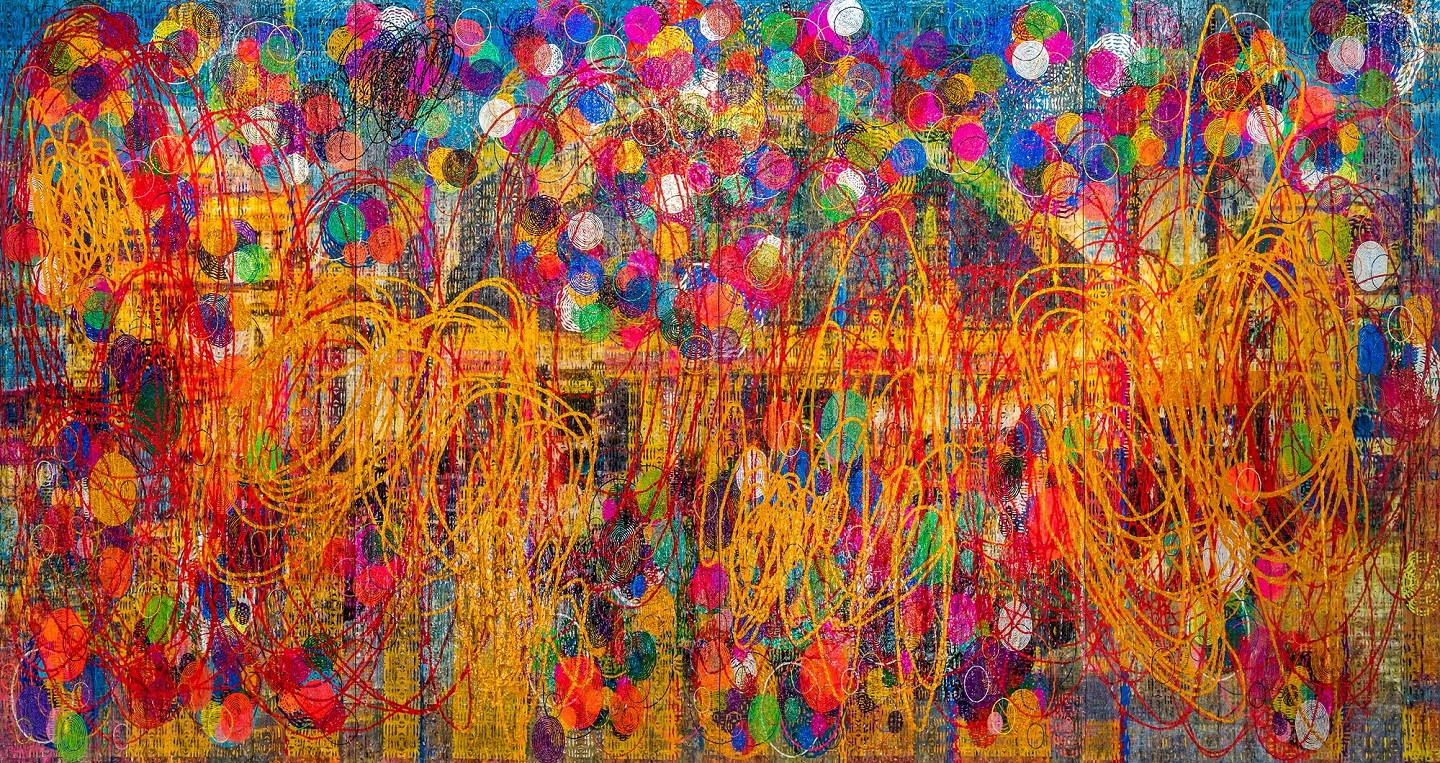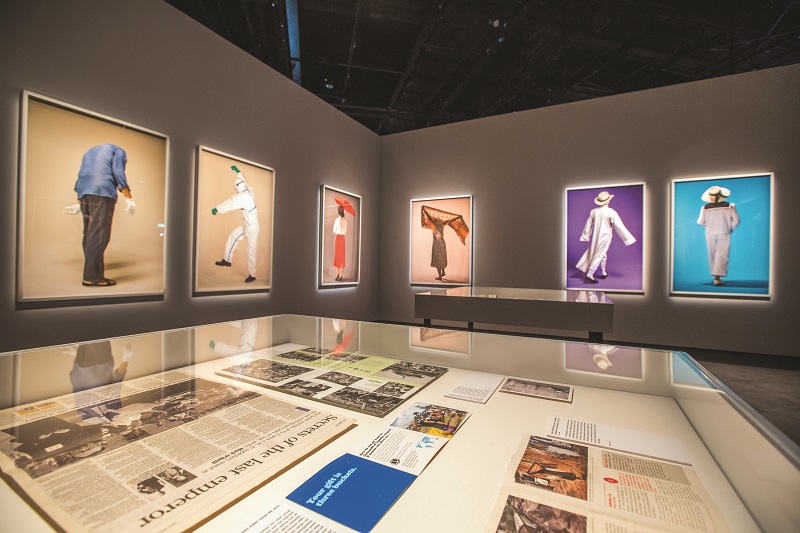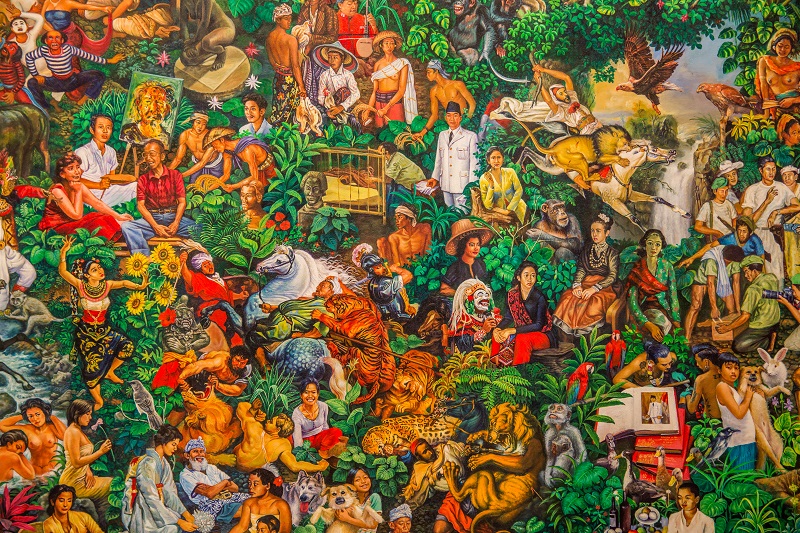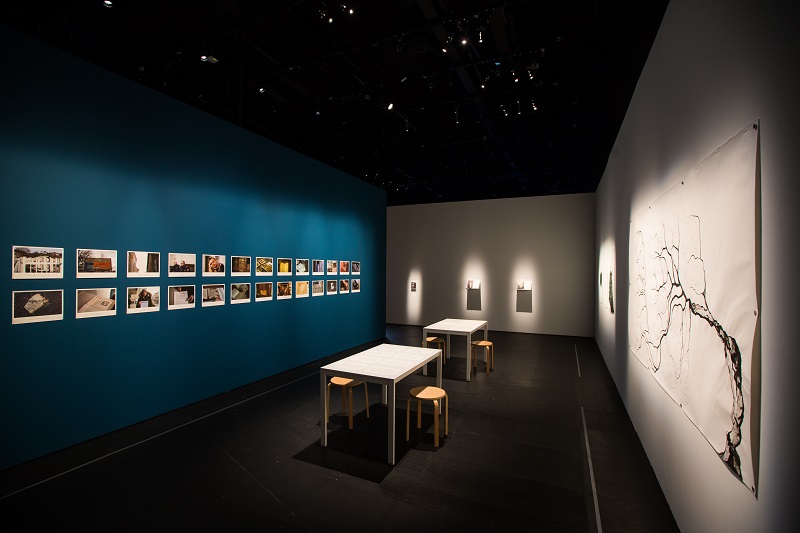
Thai artist Thasnai Sethaseree's Untitled (Hua Lamphong). Photo: Singapore Art Museum
The Asia Pacific Breweries Foundation (APB) and the Singapore Art Museum announced the 15 finalists of the APB Signature Art Prize 2018 on June 29. Exhibited at the National Museum of Singapore until Sept 2, their works were chosen from 113 artworks nominated from over 40 countries. Malaysian artist and independent curator Wong Hoy Cheong, who was one of the five jurors, notes, “A major thread that runs through many of the artworks nominated … is that of reclaiming histories and marginalised stories. Many of these artists have done research-based projects to retrieve personal and collective histories, in order to retell, reimagine and revisualise narratives that have been lost, forgotten or banished.”
Malaysian artist Au Sow Yee’s The Kris Project is one of the finalists. As the multimedia genre in fine art is not often spotlighted in Malaysia, Au’s work is especially interesting. “I used to study experimental filmmaking when I was studying in San Francisco Art Institute. I have always been fascinated by moving images but also have a lot of questions on the medium,” she says.
Cheras-born but presently based in Taipei, Au has a Bachelor of Fine Arts, majoring in filmmaking, and a Master of Fine Arts, majoring in theatre arts. Her work has been featured in many international exhibitions and screenings, including Berlin’s Haus der Kulturen der Welt and Tokyo’s Mori Art Museum. Au is co-founder of Rumah Attap Library & Collective in Kuala Lumpur as well as co-founder and co-curator of the Kuala Lumpur Experimental Film and Video Festival.
Described as a pseudo archive, The Kris Project is made up of numerous elements displayed in a four-walled room painted a calming blue. Au’s work tells three fragmented stories while touching on the history of communism in Southeast Asia. The first phase, or The Kris Project I, is the centrepiece. It is a video by a fictional filmmaker named Ravi, a persona who has collated found images and filmed snippets in a forest. Au used old Cathay-Keris movies and documentaries of wartime Malaya as well as her own footage of sites in forests or rainforests that were hiding spots for communists during the Emergency.

The Kris Project II: If the party goes on explores the questions relating to the death of Cathay empire founder Loke Wan Tho. Au also creates her own alternative history, depicting what may have happened if Loke had survived the 1964 plane crash. The last phase draws from A Night in Tokyo, Cathay Studio’s first overseas film.
Au tells us about her inspiration, “My mum used to be a huge fan of Mandarin films, especially musicals made in the 1960s, at the height of the Cold War. The golden era of the Mandarin film industry was not mere entertainment as we thought it was. The hidden power or political structure and relations underneath the glamorous film industry — these are the undercurrents of history that particularly amused me.”
The numbered objects in her installation have corresponding catalogue cards, which is the interactive element of the work, encouraging viewers to discover and read in their own order. There are hidden or underlying elements relating to the history of communism in Malaysia throughout The Kris Project. For example, her footage of a traditional dancer was recorded near the site of the Batang Kali massacre in 1948. As a whole, Au’s piece opens up a new way of looking at the history of our land, particularly during the Emergency.

Chikako Yamashiro’s Mud Man is a video that deals with geopolitics and cultural identity of the past. Shot in Okinawa, Japan, and Jeju Island, South Korea, the film is about a community roused by poems of its history and nature. Museum of the Lost and He was lost yesterday and we found him today by Leung Chi Wo and Sara Wong comprise a series of photographic portraits with hidden faces. The couple staged the photographs based on unidentifiable figures from a selection of newspapers, magazines and other published materials. The anonymity of these background characters in prominent or headlined images is brought to the forefront, challenging how we see these historical narratives.
Some of the artworks deal with the idea of migration and third culture identity. Taiwanese Fang Wei-wan’s piece, Republic of Rubber tape, is inspired by the memory of his childhood home Kampong Ayer (or water village) in Bandar Seri Begawan, Brunei. His wood-and-bamboo piece is put together with wire and raffia string. Outlined in rubber tape, there are remnants of unused twine and rolls of tape left all over the piece, suggesting that our geographical and cultural identity is an ongoing process that is never quite finished.
Ex Nilalang, a video by Club Ate (made up of Bhenji Ra and Justin Shoulder), recreates mythological tales to celebrate narratives drawn from Filipino folklore, all the while trying to change the way we look at LGBTQI+ communities. The Filipino-Australian artists draw on their own bicultural upbringing and queer identities.
The grand prize winner was Phan Thao Nguyen for Tropical Fiesta, a two-channel video coupled with oil paintings on X-ray film backings. Her work tells an imaginary narrative of rural Vietnam populated only by children.

The Jurors’ Choice Award went to Shubigi Rao for Pulp: A Short Biography of the Banished Book. Vol I: Written in the Margins and Thasnai Sethaseree for Untitled (Hua Lamphong). Rao’s installation includes video clips on monitors, giclee prints with text, ink drawings, books and three texts by a poet, historian and librarian. Her work explores issues surrounding the destruction of books and libraries. Sethaseree’s piece looks like a painting but is actually created using a collage of coloured paper streamers on Buddhist monk’s robes. From a distance, you can see the outline of historic Hua Lamphong station in Bangkok, which alludes to the sociopolitical issues of the artist’s home country.
The People’s Choice Award went to Gede Mahendra Yasa for his Batuan-style painting, After Paradise Lost #1. The dense composition depicts the bustle of everyday life with mini scenes inspired by Western and Indonesian art history.
The artworks of the APB Signature Art Prize 2018 finalists are on show until Sept 2 at the National Museum of Singapore. See here for more info. This article first appeared on Aug 13 in The Edge Malaysia.


